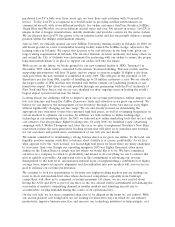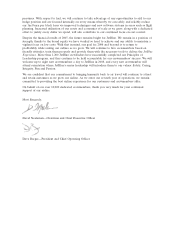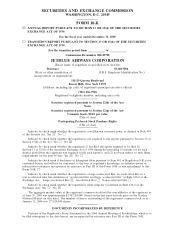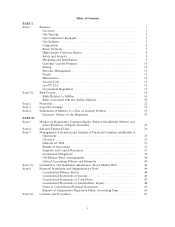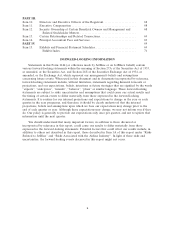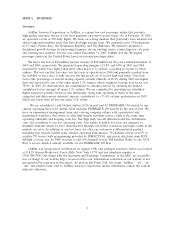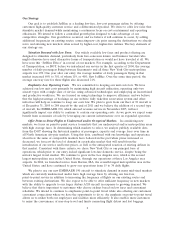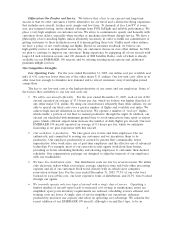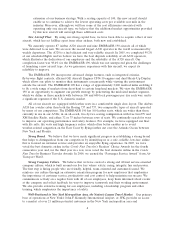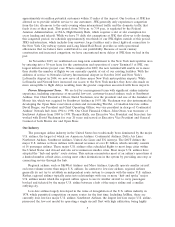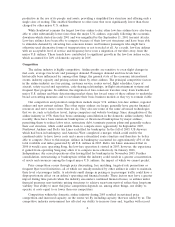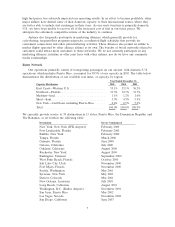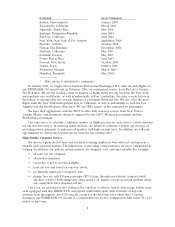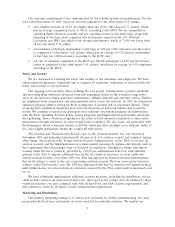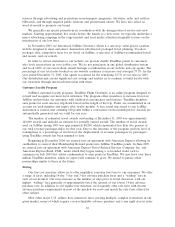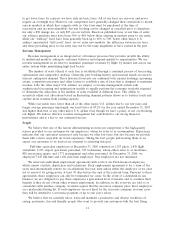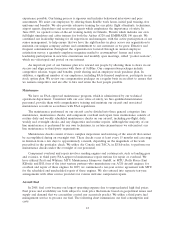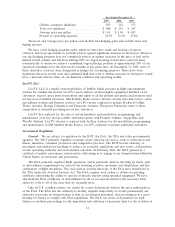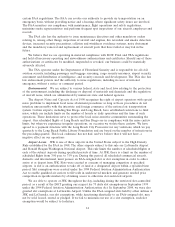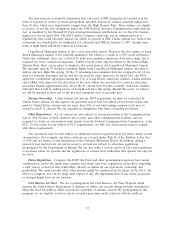JetBlue Airlines 2005 Annual Report Download - page 13
Download and view the complete annual report
Please find page 13 of the 2005 JetBlue Airlines annual report below. You can navigate through the pages in the report by either clicking on the pages listed below, or by using the keyword search tool below to find specific information within the annual report.approximately six million potential customers within 15 miles of the airport. Our location at JFK has
allowed us to provide reliable service to our customers. JFK generally only experiences congestion
from the late afternoon to the early evening when international traffic and the domestic traffic that
feeds it are at their peak. This period, from 3:00 p.m. to 7:59 p.m., is regulated by the Federal
Aviation Administration, or FAA, High Density Rule, which requires a slot or slot exemption for
every landing and takeoff. While we have 75 daily slot exemptions at JFK that allow us to fly during
this congested period, we schedule approximately two-thirds of our JFK flights outside of this period.
JFK’s infrastructure, which includes four runways, large facilities and a direct light-rail connection to
the New York City subway system and Long Island Rail Road, provides us with operational
efficiencies that we believe have contributed to our profitability. Because of recent runway
construction and increased congestion, we have encountered more delays at JFK than we had in the
past.
In November 2005, we reaffirmed our long-term commitment to the New York metropolitan area
by entering into a 30-year lease for the construction and operation of a new Terminal 5 at JFK, our
largest infrastructure project ever. When completed in 2009, the new terminal will enable us to more
than double the number of flights we are currently capable of out of our existing facilities. With the
addition of service to Newark’s Liberty International Airport in October 2005 and New York’s
LaGuardia Airport in 2004, we now serve all three major New York metropolitan airports. While
LaGuardia and Newark have increased our access to the New York market, they have also made us
more susceptible to flight delays resulting from the greater congestion associated with these airports.
Proven Management Team. We are led by a management team with significant airline industry
experience, including experience at successful low-cost, customer-focused airlines, such as Southwest
Airlines. Our Chief Executive Officer, David Neeleman, was the president and one of the founders of
Morris Air, which was acquired by Southwest Airlines in 1993. Mr. Neeleman was also instrumental in
developing the Open Skies reservation system and in founding WestJet, a Canadian low-fare airline.
David Barger, our President and Chief Operating Officer, was vice president in charge of Continental
Airlines’ Newark hub from 1994 to 1998. Our Chief Financial Officer, John Owen, was treasurer of
Southwest Airlines from 1984 to 1998. Thomas Kelly, our Executive Vice President and Secretary, has
worked with David Neeleman for over 20 years and served as Executive Vice President and General
Counsel of both Morris Air and Open Skies.
Our Industry
The passenger airline industry in the United States has traditionally been dominated by the major
U.S. airlines, the largest of which are American Airlines, Continental Airlines, Delta Air Lines,
Northwest Airlines, Southwest Airlines, United Air Lines and US Airways. The DOT defines the
major U.S. airlines as those airlines with annual revenues of over $1 billion, which currently consists
of 16 passenger airlines. These major U.S. airlines offer scheduled flights to most large cities within
the United States and abroad and also serve numerous smaller cities. Most major U.S. airlines have
adopted the ‘‘hub and spoke’’ route system. This system concentrates most of an airline’s operations at
a limited number of hub cities, serving most other destinations in the system by providing one-stop or
connecting service through the hub.
Regional airlines, such as SkyWest Airlines and Mesa Airlines, typically operate smaller aircraft
on lower-volume routes than major U.S. airlines. In contrast to low-fare airlines, regional airlines
generally do not try to establish an independent route system to compete with the major U.S. airlines.
Rather, regional airlines typically enter into relationships with one or more ‘‘hub and spoke’’ major
U.S. airlines under which the regional airline agrees to use its smaller aircraft to carry passengers
booked and ticketed by the major U.S. airline between a hub of the major airline and a smaller
outlying city.
Low-fare airlines largely developed in the wake of deregulation of the U.S. airline industry in
1978, which permitted competition on many routes for the first time. Including JetBlue, there are
currently four low-fare major U.S. airlines. Southwest Airlines, the largest low-fare major U.S. airline,
pioneered the low-cost model by operating a single aircraft fleet with high utilization, being highly
5


